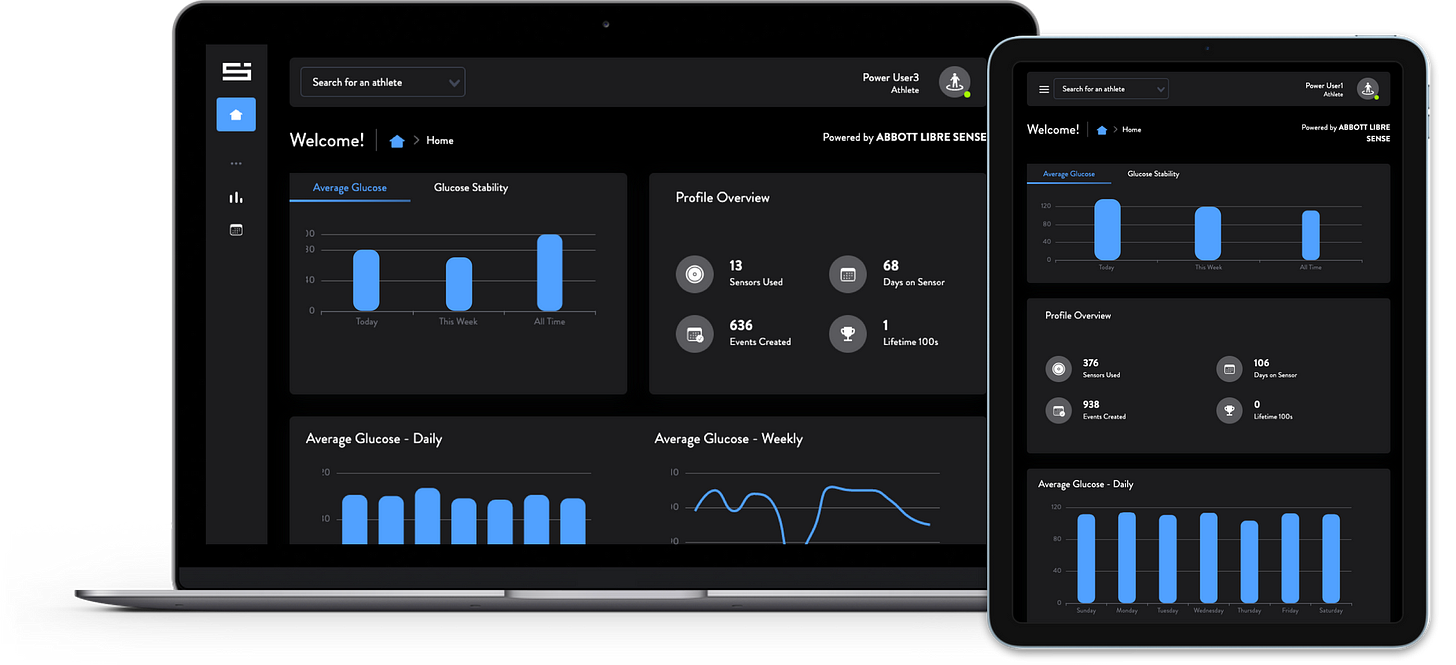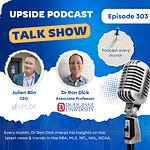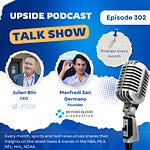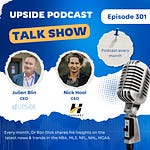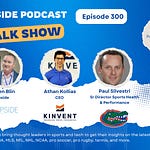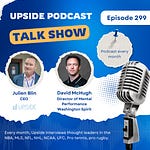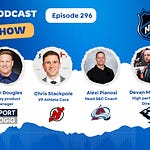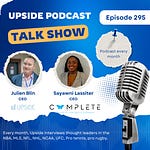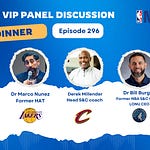This week, we have the honor to interview Phil Southerland, CEO of Supersapiens, a company using sports as a platform to pioneer Continous Glucose Monitoring to enhance performance in all areas of the life.
With biowearable technology, Supersapiens develops innovative insights around glucose data that drives lasting positive behavior change and helps unlock better performance and recovery.
Here is a picture of their glucose monitoring wearable device.
Here are some pictures of their mobile app which analyzes glucose data to inform athletes how nutrition impacts their well-being, sleep, recovery, and athletic performance.
As shown below, Supersapiens also offers a team dashboard for pro teams:
Here is a video explaining how the technology works:
Supersapiens is trusted by sports brands and sports organizations such as adidas, Abbott, Garmin, Wahoo, Oura, Team Jumbo-Visma, F1 Drivers, teams within MLB, NHL, NBA, various Olympic Federations, PGA players, Premier League, ATP, Redbull Performance Center, and more.
📝Show Notes: Through this interview, we touched on his background, his company and product, the benefits for sports organizations and athletes to use his product. We also talked about their competitive advantage, business model and plans for the next 12 months.
Best Quotes: Here’s some of the key discussion points and best quotes from our conversation with Phil:
On his background as a diabetic and professional athlete:
“I've got 41 years of story to tell but I was diagnosed with diabetes at seven months of age. At six years old my parents were told I'd be dead or blind by 25. We found out that if I was active in moving, my glucose numbers were more like theirs. So in the late eighties, at a time when diabetics were not supposed to compete in sport, my parents said, screw it…If he's going to live a short life, he might as well enjoy it. And let's see how it goes, and in the world of sport, I realized very quickly, If I had good controlled glucose, I can win”.
“If I had bad controlled glucose, I will lose. And then the third, which is I think critical for the entire population, is that the days I was active and moving, it was much easier to have glucose stability throughout the rest of the day. So sport actually made diabetes really easy for me to manage. And I stayed in athletics. I was a top 10 athlete in cycling. That became my drug of choice. And at 12 years old I was a Top 10 athlete in the nation as a junior, again I was a top 10 in the US as a U23 in the road race”.
“And then I met a guy with diabetes. I inspired him to take control for the purpose of living a good life for seeing his grandkids grow up. In college, I started my first business Team Type 1, which was to use sport as a platform to inspire, educate, and empower people affected by diabetes”.
On how he got the idea to start a professional cycling team:
“So with that business, I got access to continuous glucose monitoring in 2005, when I used it to take an all diabetic team to set a world record in the race across America in 2006. And then we went on to form a professional team called Team Type 1. Then in 2012, Novo Nordisk took over the naming rights. So it became Team Novo Nordisk, an all diabetic pro cycling team. And I went on a mission to get glucose to our bike computer to help our athletes be the best that they could be”.
On how he got the idea to launch Supersapiens:
“Team Type 1 and Team Novo Nordisk have abolished the stigma associated with type one. They're now athletes and people achieving massive goals all over the world with type one diabetes because of this team, because they inspired them”.
“And this team is the reason Supersapiens exist because we solved a problem for them. When I knew this was the best technology I ever had, I wanted to bring this to market. I'd never sold a product. I'd sold hope and inspiration via big sponsorship deals to big pharma, but never transaction with the consumer”.
“And so as I sat asking for mentorship, what should I do with this technology? How should I bring this to market? I kept hearing from more and more people without diabetes, telling me: I'd buy this. I don't have diabetes, I'd buy this. I don't have diabetes. And I was fortunate to strike a deal with Abbott to leverage their amazing technology the Libre sensor and bring a specialized version of that to the non-diabetic market through the lens of sport”.
“I'm grateful for sport. If you want to sum up the last two minutes of my verbiage in one sentence, it would be that sport is the billion dollar drug that never gets prescribed. And I think my businesses are a testament to that”.
On the fact that there are 450 Million people that are diabetic today:
“The number keeps fluctuating. I think the latest is about 450 million people in the world. 95%-97% of that number are people with type two diabetes. It's projected to hit 635 million people in the next five to 10 years”.
“I think of the US, which is sad at 10% of the Kids under 10 are obese, 20% of kids under 18 are obese. Everyone flies blind about their metabolism and what does what to the body. So I really want to use sport as an active platform make people aware of this”.
On how monitoring glucose level can greatly impact weight lost and more:
“As we put continuous glucose monitor on more people, we started getting these qualitative, feedback of, Hey, I lost 20 pounds with Supersapiens, how well I stopped eating foods that caused my glucose to go above a hundred. So you think you're going to stay as a non-diabetic if you're eating good foods? Most likely between 90 to 100 mg/dl, give or take”.
“Everyone's a little different, but the spikes in food cause your body to produce insulin. If your liver glycogen is full or your muscle glycogen is full, that insulin is going to take that glucose and turn it to fat, and little bits over time. And it will increase more fat, increase more weight gain. So by preventing the spikes, you can use the fuel that's already stored in your body as energy and the weight just very slowly starts to come off. It's not a miracle and it doesn't happen overnight like that. But you begin to use what's your body already has, use the fuel in the gas tank versus just having gas spilling out and stinking up carb”.
“So that's for weight loss, it's been incredibly effective and for the world of endurance sport in particular, and sports like running, cycling, triathlon. Power to weight ratio is the most critical there. This is a metric that they look at. So if power stays frame and weight comes down, you get a lot stronger and you perform better”.
On how monitoring glucose level can greatly impact sleep:
“So we really started laser focusing in on sleep. And what we saw is when people have high glucose variability overnight, it causes disruptions in sleep. And, and again, initially anecdotally it was, I woke up from a dream. And my glucose was 140. Or I kept waking up, and my glucose was 60, so it's not that. But people would then say, if I had glucose stability of 80 to 90 overnight, I had the best night's sleep I had in a long time”.
“So we then dived into the research of this, we've got a good partnership with Oura. We also work with Adidas and the Runner's High Project, a partnership that also includes Whoop where we are analyzing runners and sleep and glucose over the next year”.
“A lot has to be done to scientifically validate this, but we've been able to see this and more and more of our athletes that. If you go to sleep with a stable glucose level, and by the way it's not creating anything new. Whoop and Oura have said that eating too close before bed is going to disrupt your heart rate, and sleep. Now is it heart rate variability? Or is it the glucose fluctuations that disrupt the heart rate variability that disrupts the sleep? They're all tied together. It's not just one thing screwing up your sleep. So giving people visibility of glucose and when to have their last meal, is critical”.
On how teams started using their glucose monitoring solution to adapt their meal plan and know when to give them their meal to optimize training:
“Initially with the pro cycling teams we work with, what we did was we found that each rider was different. Some riders needed to eat their last meal at three hours. Some needed to eat their last meal at four hours, others at three and a half. And so we helped these athletes solve for what was the most optimal meal and what was most optimal time before training to get optimal glucose and best feeling during training”.
“And once that problem was solved, the athletes said, well, I can't live without this because what works today is not what works tomorrow. And so if you're typically a three and a half hour guy and that's when you eat your last carbohydrate protein meal, 9 times out of 10, that works. But for some reason, on race day your glucose is higher than normal, then you now know what's the adjustment that I need to make more water or more carbohydrates. Or if your glucose is a little lower because somehow you know your insulin responded a little bit better than normal, then I need a snack 10 minutes before the competition, because that's going to get me back to optimal state”.
On how Supersapiens can help nutritionist of teams adopt the best nutritional strategies for each athlete:
“All these pro sports teams, they have great nutritionists, they have good nutrition protocols. They probably think they're doing it right because that's what the science and the patterns and habits of sport are. It's been the same in cycling for years”.
“If you have a specific protocol for your 20 players that are going on the pitch, then you can find out does it work for six of them? What do we change for the other six? And then, oh my God, this is failing horribly for the final six. So what do we do? We allow them to adopt the team's nutrition strategies per the individual”.
On how Supersapiens can help NBA players and teams optimize performance during games:
“So that's going into the game. And then you look at half times, right we've seen with NBA players or basketball players that have used Supersapiens, They get elevated glucose during games. And then halftime comes and the insulin responds, nd brings a person down. Then they have lower glucose to second half, they're not performing as well”.
“I know this glucose and how the body responds. I can look at guys playing basketball, playing, so like, yep. Their glucose is low. That's why you can adjust what's your halftime fueling regime, and then how much and when you give carbohydrates to athletes during the game, just to make sure that you know in the final minutes of game when everything's on the line with a hundreds of million dollars you spend in these players to have them win your win the game…Well, do you want them at a 100% of themselves or do you want them at 50% of themselves?”.
On how monitoring their glucose level can help athletes better manage their metabolism:
“It gives me a great sense of pride in so many different sports, but to know that they're managing their metabolism to effectively make more responsible decisions about what they eat when they eat. It's going to mean they're alive for longer and they feel better for longer, and they stay active for longer, and that means they're going to be bigger advocates for the sport”.
On some athletes in the NBA and F1 that are currently using Supersapiens glucose monitoring system:
“We've had some pretty big name NBA players who we know are using it.
They love it. I can't speak to their names right now. But the athletes are the ones who are kind of really seeing the magic of it. In Formula One, we've had some big success this year and you don't have to look too far to who's had big, big success this year. It's cool to see, and we are not the reason everyone won, right? It's the athletes, their dedication to the sport, their dedication to train, hard work, and discipline. That's why they're winning. We can just make it a little easier for everyone to be the best version of themselves”.
On the fact that Supersapiens plans to launch some new products with new biosensing capabilities through their partnership with Abbott:
“I know what Abbott's current technology is and I know what their pipeline looks like. Glucose is only the beginning. There are other analytes that are coming, and that are really going to help us facilitate, not just a glucose solution for athletes, but a full comprehensive solution for serving the world of sport”.
On their business model nd the best way to contact the Supersapiens team:
“So for teams in Europe, we're CE marks approved in Europe. They can contact us. If you're a team, contact me, Phil Southerland (phil@supersapiens.com), and I'll get you in touch with one of our sales country managers, and we can do deals with teams individually.
“About 70% of our business is direct to consumer, so people go on the website, where you can choose from different packages there to acquire the sensors. We have a wholesale deal with Abbott, then we mark the products up and then we sell them. That's our business model.
“And then about 34%- 35% of our business now is B2B, so direct to teams and they buy in bulk.. I've got a dedicated performance team. We have the time to work with teams to make sure they're onboarded the right way to and make sure that they understand the system. The teams and the players are going to get maximal value on it once they're on the system”.
On their plans for the next 12 months:
“So yes we plan to raise more money. In the world of startup, fundraising never ends. It's been a fun journey. We have some powerful investors. I just finished another $6M round this week. We've got the US market entry coming in the near future. So I'm raising capital now to prepare for that launch”.
“We do have other analytes that are in the pipeline. I think a year out is probably realistic for launch of those. We'll make that public, but we really just are hyperfocused on the product. It's, it's easy now for the very intelligent, high performing nutritionist to figure out how to use this for their team. But as we said earlier, to scale this to the masses, to the fans of sport, to the people who want to be like the professional athletes out there, we're really hyperfocused on simplifying and giving those more specific personalized recommendations.
So the product is the key, the app is the hub of our product. So just making that more accessible, more easy to understand is critical for our long-term success as a business”.
You may also like:
🔥 Upside Chat: Dave Hancock, CEO, Apollo (Leading Athlete Management Systems (AMS) vendor)
🔥 Upside Chat: Dr Andy Barr, Consultant, Brooklyn Nets (NBA) & Quantum Performance Founder
🔥 Upside Chat: Ismael Fernandez, ThermoHuman CEO
🔥Upside: AMS Ecosystem Analysis: Key Trends, Vendors and Recommendations to Teams
💦Upside Analysis: The sweat and heat sensing market (Key Trends, Vendors)





